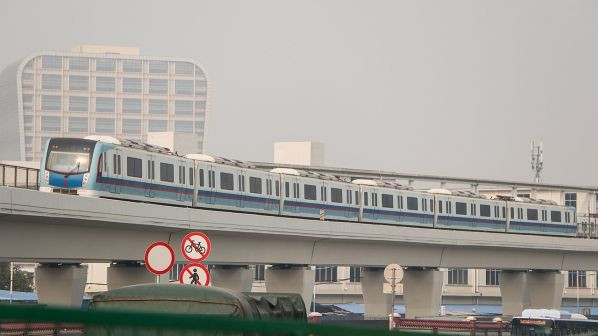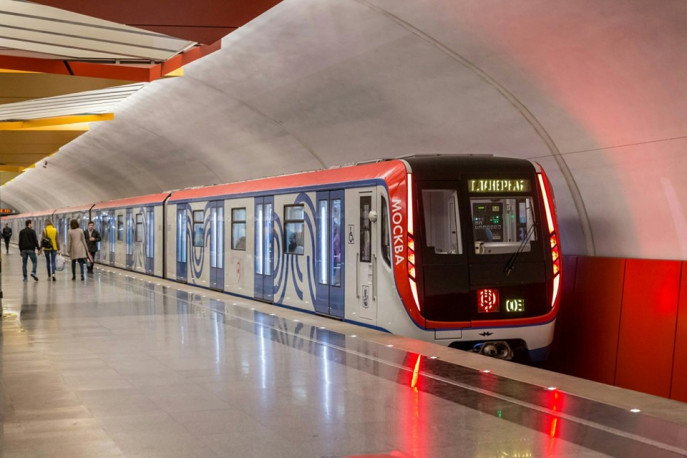Friday
September 15, 2023
With the inauguration of the first-ever elevated metro rail in Dhaka on Wednesday, Bangladesh entered a new era of the digitised transportation system.
The first phase of the operation will cover a 1.73 km part of the Mass Rapid Transit (MRT) Line-6 of the metro rail project from Diabari to Agargaon. The metro rail route from Agargaon to Motijheel will be completed within December 2023 and the part from Motijheel to Kamalapur by 2025. After the metro rail project is completed, the distance from Uttara to Kamalapur will be 22 kilometres.
Bangladesh has become the third country in South Asia to operate a metro rail service – being a late starter in the expensive and complicated venture compared to neighbouring India which got its first metro commissioned in 1984 in Kolkata. Pakistan started its first metro in Lahore just two years ago.
Rapid urbanization around the world has resulted in the construction of quality transportation systems emphasising reduced congestion, fewer emissions, and livable cities. The first underground metro rail, commonly known as the Tube, began operation on 10 January 1863 in London but it was a steam engine-based system until 1890 when City & South London Railway launched its first underground electric rail.
At 402 kilometres in length, the London Underground is also the world’s second-longest metro system while 434 kilometres Shanghai Metro in China is the longest to date.
Here is a list of the 10 largest metro rails in the world.
1. Shanghai Metro – China
The Shanghai Metro, which was first launched in 1993, is the largest metro in the world with 508 stations and the longest with a total length of 831 km. With over 3.7 billion ridership annually, it is the busiest metro in the world after the Beijing Subway. It has the same value as the Beijing Subway, with more than 10 million ridership in a day and 13 million records of performance.
2. Beijing Subway – China

Beijing Subway, first launched on 1 October 1969, has a total of 394 metro stations including 60 transfer stations. The total route length is 678.2km, but it is considered 669.4km without the Xijiao line. Therefore, Beijing Subway is the second longest metro system in the world. Its daily ridership is more than 10 million, but on 12 July 2019, it was more than 13 million and, thus, broke a record. It ranked first in the list of busiest metros in the world with over 3.8 billion ridership annually.
3. London Underground – United Kingdom

The London Underground is the oldest underground in the world, which began operating in the 1890s. Interestingly, although it is named the underground, only 45% of the subway system is underground. It is ranked fourth-longest in the world with a length of 402km. Daily ridership is over 5 million, and annual is more than 1 billion, as per statistics. This underground, which has been operating for more than 156 years, also has the nickname “The Tube.”
4. Guangzhou Metro – China

The metro, launched in 1997, has been ranked the third-longest metro system with a 607km route length. Its daily ridership is about 8 million times. It reached its peak of 10.62 million ridership on 6 June 2019. Overall, it was announced as the third metro system with a ridership of over 3 billion in 2018.
5. New York City Subway – United States

The New York City Subway opened in 1904 and is considered the eighth oldest subway. With a length of 399 km, it is the fifth-longest metro system in the world, the ninth-busiest metro in the world with an annual ridership of 1.6 million. It is the world’s most extensive metro system with 424 stations. There are 472 stations if the transfer stations are included. 470 of these 472 stations operate 24 hours a day all year long. It is planned to give another 14 new stations into operation.
6. Delhi Metro – India

Delhi Metro in India, being opened in 2002, has a total length of 389 km and is the eighth-longest metro system in the world. There are 285 stations in total including transfer stations counted more than once. The annual ridership of Delhi Metro was more than 900 million according to 2018 statistics. The United Nations approved the Delhi Metro Railway Corporation in 2011 as the first metro system to reduce greenhouse gas emissions in the city by reducing carbon emissions.
7. Moscow Metro – Russia

Another largest metro system in the world is the Moscow Metro with 236 stations. Its route length is 397.3 km but if the Moscow Monorail and the Moscow Central Circle are included it will be 456km long. According to the statistics of 2018, the ridership of Moscow Metro, launched in 1935, was over 2 billion during a year; thus, ranked sixth in the world.
8. Wuhan Metro – China

Founded in 2004, the Wuhan metro is the eighth-largest subway system in the world. The 339km long metro line has a total of 228 stations. It is operated both underground and as an elevated express service.
9. Seoul Metro – South Korea

The Seoul metro, which opened in 1974, consists of 315 stations. It has a total route length of 340.4 km. It is known as one of the busiest metros in the world, with more than 1.9 billion annual ridership. There is a plan for new metro stations and lines that will be opened by 2024.
10. Madrid Metro – Spain

The Madrid metro system, which celebrated its 100th anniversary on 17 October 2019, ranked tenth largest metro rail with 302 stations. The total length is 293km. It is the least-used metro system on the list with more than 600 million annual ridership in 2018. The Madrid metro system has as many escalators as it has ever been anywhere else in the world. It has a total of 1705 escalators and 529 elevators.
Metro Rail
While most comments will be posted if they are on-topic and not abusive, moderation decisions are subjective. Published comments are readers’ own views and The Business Standard does not endorse any of the readers’ comments.
The Business Standard
Main Office -4/A, Eskaton Garden, Dhaka- 1000
Phone: +8801847 416158 – 59
Send Opinion articles to – [email protected]
For advertisement- [email protected]